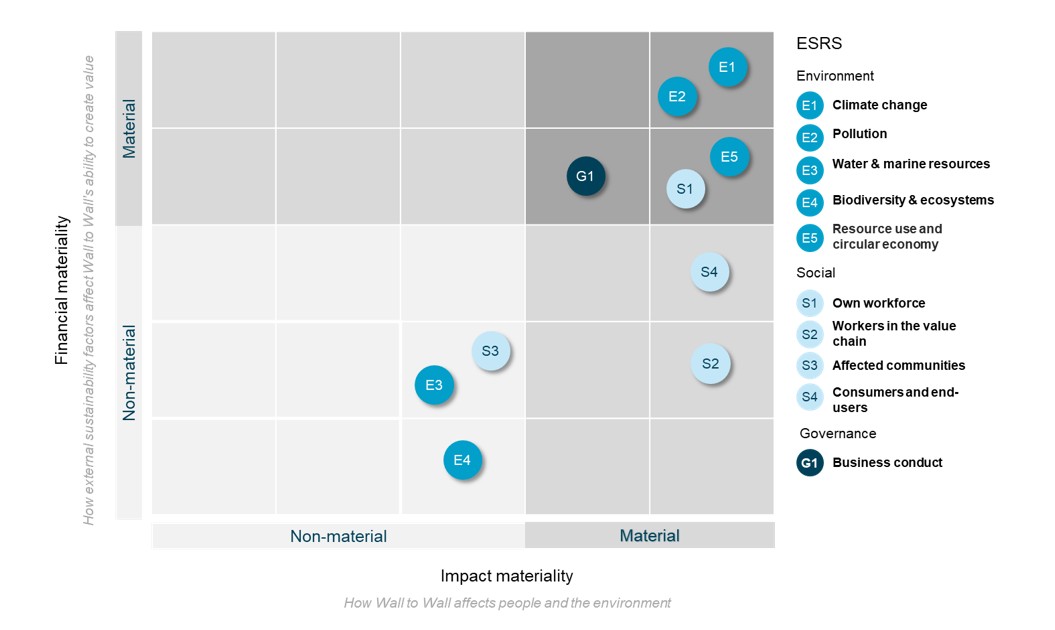Sustainability goals

The preliminary results of the double materiality assessment were validated by representatives from Wall to Wall Group’s management and other relevant key functions. Final adjustments were then made to ensure the quality and relevance of the analysis.
The double materiality assessment concluded that seven of the ten ESRS topic standards are material from an impact perspective, along with 19 identified sustainability topics. The results have been presented to the board for their awareness and to provide an opportunity for input.
However, it is important to emphasize that not all subtopics or subcategories within each standard have been assessed as material.
Five of the ten ESRS topic standards have been deemed material from both an impact perspective and a financial perspective:
- Climate change (E1)
- Pollution (E2)
- Resource use and circular economy (E5)
- Own workforce (S1)
- Business conduct (G1)
Gap analysis
Wall to Wall Group has conducted a Gap analysis of its sustainability efforts. The analysis aimed to identify gaps between existing processes and future requirements, as well as to assess the availability and quality of current information. The goal was to provide insights into the actions needed to enable future reporting.
The analysis identified actions to improve information management and processes related to sustainability efforts. It provides a clear plan to ensure an effective and strategic sustainability approach for the Group in the future.
Disclosure requirements in ESRS covered by the undertaking’s sustainability statement
| ESRS Standards | Disclosure Requirements |
|---|---|
| ESRS E1: Climate change | E1.2, E1.3 |
| ESRS E2: Pollution | E2.1, E2.2, E2.3, E2.5, E2.6, E2.7 |
| ESRS E5: Resource use and circular economy | E5.1, E5.3 |
| ESRS S1: Own workforce | S1.1, S1.2 |
| ESRS S2: Workers in the value chain | S2.1, S2.2, S2.3 |
| ESRS S4: Consumers and end-users | S4.1, S4.2 |
| ESRS G1: Business conduct | G1.1, G1.5 |
